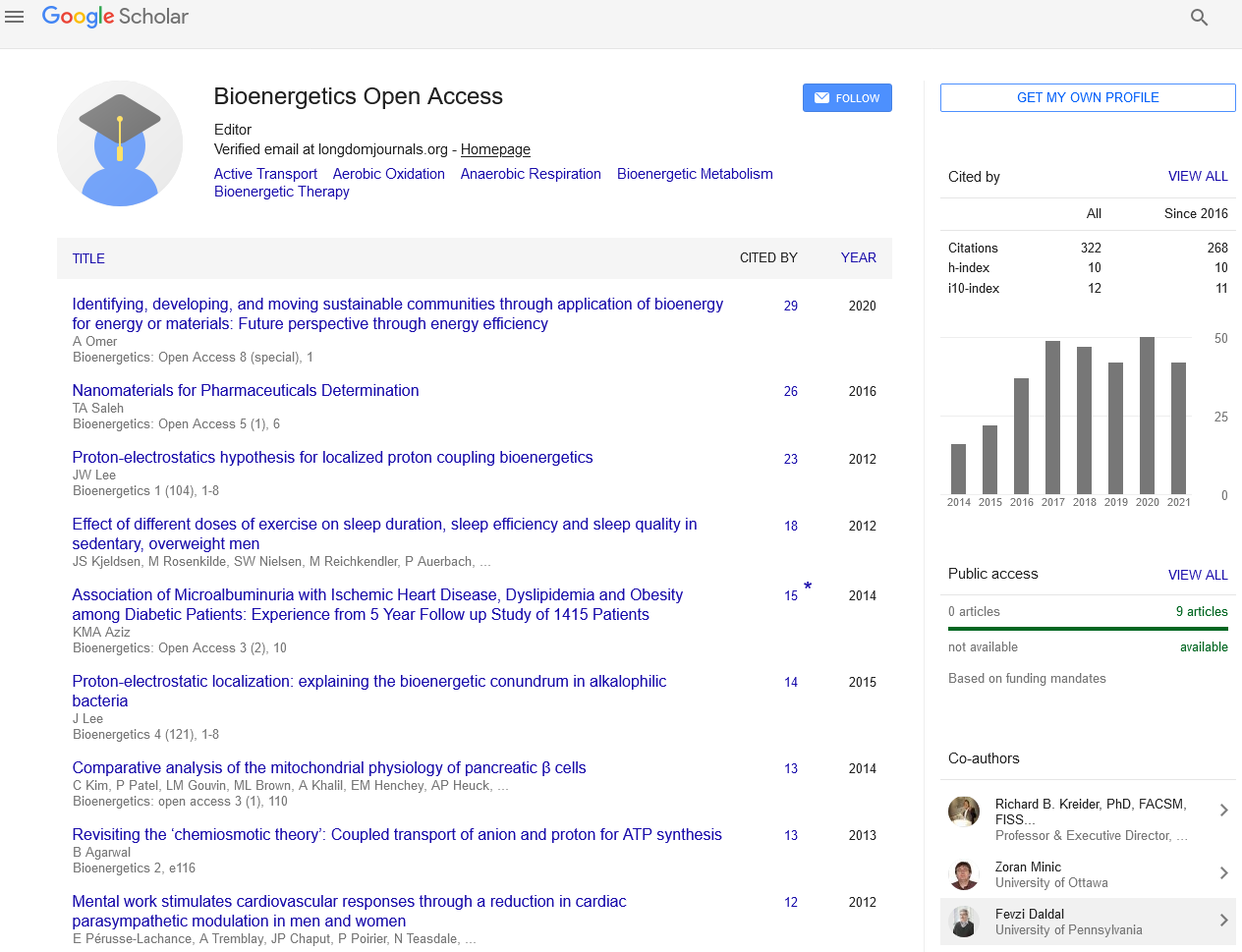Indexed In
- Open J Gate
- Genamics JournalSeek
- Academic Keys
- ResearchBible
- RefSeek
- Directory of Research Journal Indexing (DRJI)
- Hamdard University
- EBSCO A-Z
- OCLC- WorldCat
- Scholarsteer
- Publons
- Euro Pub
- Google Scholar
Useful Links
Share This Page
Journal Flyer

Open Access Journals
- Agri and Aquaculture
- Biochemistry
- Bioinformatics & Systems Biology
- Business & Management
- Chemistry
- Clinical Sciences
- Engineering
- Food & Nutrition
- General Science
- Genetics & Molecular Biology
- Immunology & Microbiology
- Medical Sciences
- Neuroscience & Psychology
- Nursing & Health Care
- Pharmaceutical Sciences
Abstract
Assessing the Influence of the Transition from Primary to Secondary School on the Volume of Active School Transport and Physical Activity: A Prospective Pilot-Study
Richard Larouche, Guy EJ Faulkner and Mark S Tremblay
Objectives: Active school transport (AST, e.g. the use of non-motorized travel modes such as walking and cycling to travel to/from school) is increasingly promoted as a source of physical activity (PA) in children and youth. This prospective pilot-study assessed the: 1) test-retest reliability of a novel measure of the volume of AST; 2) changes in AST and pedometer-determined PA across the transition from primary to secondary school; and 3) associations between AST and PA at both time points.
Methods: 55 grade 6 students were recruited from 4 primary schools in Ottawa (Canada) in May/June, 2012. They were asked to complete a diary indicating their mode of transport to/from school for 1 week, and wear a SC-StepMX pedometer for 8 consecutive days. 48 study packages were returned at baseline and 29 at follow-up (September/October 2012). For the test-retest assessment, a separate sample of 22 participants completed the diary during 2 consecutive weeks.
Results: The weekly volume of AST (e.g. number of active trips X distance) showed high test-retest reliability
(ICC=0.87). There were significant decreases in the proportion of children categorized as active travelers (57% to 46%), and in step counts (16,578 ± 3,758 to 14,071 ± 3,680 steps/day) across the school transition. However, in participants reporting at least 1 active trip at both time points (n=11), the volume of AST increased with a moderate effect size (d=0.52), but this change was not statistically significant. While no dose-response association between the volume of AST and PA was evident (probably due to limited statistical power), a gender-adjusted ANOVA indicated that active travelers accumulated an additional 2,207 steps/day at follow-up.
Conclusion: These findings suggest that future research is needed to quantify changes in AST across the school transition, and to determine if AST can attenuate the commonly-observed decline in PA levels from childhood to adolescence.

